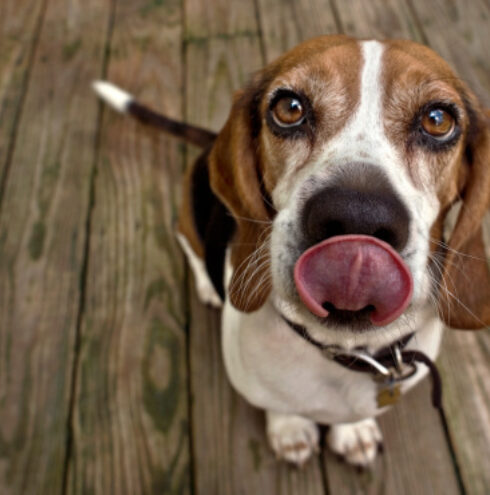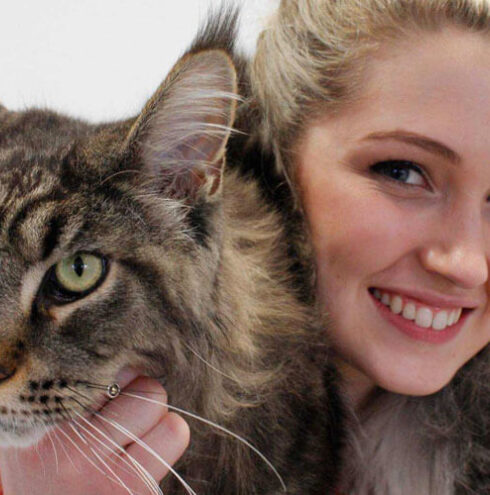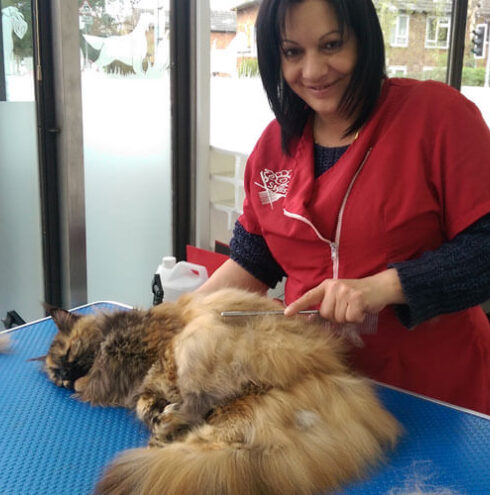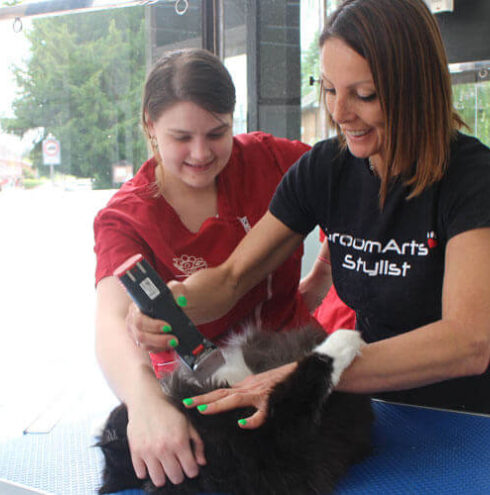How to spot signs and symptoms of pet depression and how to react
A comprehensive guide to pet depression and what you can do to help
Signs and symptoms of depression in dogs
As a conscientious dog owner, you’ll notice changes in your dog’s behaviour — just like you would for any family member. However, it’s important to get your pup checked by a vet before assuming that it is depression, because the following symptoms might signal physical health problems too.
Appetite changes
Dogs can experience changes in appetite when they feel depressed — just like us. Some dogs lose their appetite and refuse to eat, while other dogs comfort eat more than they usually would. Comfort eating dogs can’t reach for a tub of ice cream like we can, but they can pester you for treats and scoff down their food quickly.
Sleeping all the time
This can be hard to spot at first, because we know how dogs love to nap. But when your dog is feeling good, they’ll usually nap when you aren’t around. If you return home from work and your four-legged friend doesn’t greet you like they normally would, preferring to sleep, or looking lethargic — then they might be feeling sad. Just like humans, the reverse of this can also happen; with depressed dogs struggling to sleep.
Loss of interest
Loss of interest is a key symptom of depression. If your dog isn’t interested in the things that usually excite them — such as going for a walk or playing with a ball — they could be suffering from dog depression.
Excessive licking
Depressed dogs often lick or chew their paws to try to self-soothe and sad, bored dogs can also lick or bite their paws out of frustration. However, sometimes the dog might simply have sore paws or joints — so take them to a vet to be sure.
Avoidance and hiding
Just like humans wanting to hide under the duvet and cancel social events when they’re depressed, dogs have the same instinct. Depressed dogs have been known to hide in cupboards or under beds — but make sure a vet checks them over — because this can also be a sign of physical illness in dogs.


Causes of Dog Depression
A dog can become depressed for a variety of reasons. The first step is to recognise any potential causes:
Changes to environment
Dogs are homebodies. They’re happy when they’re at home, surrounded by familiar objects and smells. Moving house, or having building work done to your home, can make a dog feel afraid and insecure in the strange surroundings, especially with a disrupted routine.
Family change
A dog is part of your family. They depend on you and other family members for love and security. So if there are changes to the family, such as a bereavement, a divorce or children leaving home, they’ll be upset as a result.
Suddenly spending less time with your dog can also distress them, leading to separation anxiety. For example, if you normally work from home, but you start to commute to the office instead, your dog will miss you and the routine you had together.
Boredom
Too much boredom can lead to depression. Originally, dog breeds were specifically bred for different jobs — such as working dogs or companion dogs — and they didn’t leave their human’s side. But today, dogs are often left at home while their owner has to go out to work for long hours, and this can lead to excessive boredom and an unhappy hound.
Fears and phobias
A dog who has a phobia, (such as a phobia of loud noise), is in a constant state of heightened anxiety. This can be mistaken for dog depression, or can lead to dog depression, if the dog is in an environment in which they’re constantly having to face their fear.
Seasonal affective disorder (SAD)
Not being able to do the things they love, or have been bred to do, can result in a sad dog. And the winter brings a major change in a dog’s routine — the winter weather means that you and your dog spend more time indoors and less time outside. On the other hand, it’s worth noting that certain breeds of dogs can also get depressed because the intensity of exercise is too high for them during warmer months, when you might go for longer walks. So it’s all about researching your dog’s breed and doing the right thing by them.
Poor training
Training methods which focus on punishment can leave dogs lacking in confidence (just like children). An overly strict owner can result in a dog who is quiet, as they’ve been bullied into submission and obedience, leading to a dog who is silently depressed. This can be hard to spot, as the dog is behaving well, not complaining — and making life easy for humans. Make sure that you train using rewards and encouragement, which will also help to bond your relationship.
Pain
Chronic pain can lead to dog depression — another reason to make sure that your dog has that check-up with the vet.
Personality
Dogs have different personalities, just like us! If your dog is usually quiet and reserved, this doesn’t mean that they’re depressed. You’ll know your dog, so watch out for any changes in their usual personality.
How to treat dog depression — is there a cure?
It’s vital that you’re proactive if you recognise any of the signs of dog depression — no dog should have to suffer silently. In addition, many signs of dog depression could also signal a physical illness, so you need to act quickly.
✔ Talk to a vet
First up, if you think that your dog might be suffering from depression, it’s important that you visit a vet to make sure they’re physically well.
Medication from a vet to treat dog depression will be a last resort, but there are instances when it may be the best option.
✔ Grooming
After a physical checkup from the vet, focus on some quality time with your dog. Regular grooming provides bonding time and allows your pet to communicate with you and feel more connected. It also lets them know that you are there for them and that you are together as a pack.
The benefits are physical as well as mental — grooming helps to lower blood pressure and reduce heart rate, which lowers feelings of anxiety and stress. It helps to release positive hormones like endorphins and increase oxytocin levels which encourage bonding. Grooming also allows the pet to feel more comfortable and clean — and a healthy pet is extremely important whilst they are feeling at their worst.
✔ Exercise
Exercising with your dog can be a lot of fun, and a bonding experience. You don’t have to go for the same old walk, which will bore you both — try games and tricks and visit different places, or go on a doggie-friendly holiday.
✔ Play dates
Dogs are social animals, so meet up with other friends who have dogs for walks together. You can also take a look at recommended local dog walkers or doggie daycare to provide them with a change of scenery and human!


Signs and symptoms of depression in cats
Fortunately, cat depression is often short term once it has been identified, but nevertheless, it’s very upsetting to know that they’re feeling sad for any length of time. The best thing you can do for them is to spot the signs as quickly as possible. Here are some tell-tale signs of cat depression:
Meowing more or less
Some cats who normally meow a lot may go quiet if they’re depressed, while others will cry in mournful, low yowls. While purring more than usual can actually be a sign that a cat is sad and trying to comfort themselves. The signs can be complicated — so note any vocal differences from your cat’s normal.
Body language
You can also pay attention to your cat’s body language. If a cat is tucking their tail in, putting their ears back, or their hair is standing on end — they may be suffering from depression.
Aggression or fear
If a cat is depressed, they’re more likely to be extra sensitive and so might react in an aggressive or fearful way to others.
Hiding
Cat depression can make your usually sociable kitty become reclusive. They can choose to disappear outside all day or they can hide under beds and refuse to come out.
Excessive sleep
This is tricky to spot because we all know that cats love to sleep! But depressed cats sleep even more. A depressed cat might also choose to nap away from their favourite napping location.
Changes in grooming
Cats are very clean animals, so if they suddenly stop grooming themselves, you need to get them checked by a vet as it can be a sign of depression or ill health (or both!).
Change in appetite
Just like us humans, cats can lose their appetite if they’re feeling sad. Don’t ignore any changes in their eating habits, as it could signal that they’re suffering.
Spraying
Urinating in inappropriate places can be a big red flag for cat depression. They’re spreading their scent to make themselves feel better, and will often do this in indoor areas such as your bedroom or their favourite window lookout.
Excessive scratching
Another way of marking their territory in an attempt to feel better is by scratching more than usual. You may automatically tell a cat off for doing this to your furniture, but they may be doing it because they’re depressed.
Causes of depression in cats
Just like humans, cats can become depressed as a direct result of a life event, such as bereavement or divorce. Or they may be in chronic pain. So it’s vital that you take your cat to see the vet if you see changes in their behaviour.
Illness
Illness can seriously affect your cat’s happiness level. Imagine feeling ill, but not being able to tell your family. Your cat may be in pain, they may be exhausted or feel nauseated...many illnesses can lead to cat depression.
Injury
Cats need help to manage pain, just like we do. Chronic pain can be depressing for a human, and the same for a cat. Often an injury will mean that they can’t do the things they enjoy until they’re fully healed, and this can also lead to cat depression.
Bereavement
Cats ache from grief, grieving the loss of a human or another cat just as profoundly as a human. They may search for the cat or human that has passed away. They may also stare into space instead of watching birds out of the window. The grieving process can sometimes lead to depression.


How to treat cat depression — is there a cure?
Yes! You can help your feline friend in a number of ways — take a look at the ways of lifting their mood below:
✔ Routine
Cats need to have markers throughout their day so they know what time of day it is. They thrive on the reassurance of a daily routine, being fed at the same time each day. And don’t forget to schedule a set time each day to stroke and pet them to make them feel safe and loved.
✔ Grooming
Regular grooming helps to enrich your relationship with your cat, allowing you to feel more connected and your cat to feel loved and part of the family. Grooming also helps to lower feelings of anxiety and stress by lowering blood pressure and reducing heart rate. It helps to increase oxytocin levels which help bonding and release positive hormones like endorphins. Grooming also allows a depressed cat to feel clean and comfortable — cats are typically very clean animals.
Grooming your cat regularly can also help reduce problems that can trigger cat depression such as:
- Skin irritation
- Heat stress
- Painful matted hair
- Parasites and ticks
- Bald patches
- Unnoticed lumps
✔ Mental stimulation
Cats are intelligent creatures and need mental stimulation to feel sharp, energised and happy. They need daily challenges or they’ll start to pick a fight with your sofa instead. Boredom and frustration can lead to depression.
Here are some ideas to get you started:
- Make sure you have cat scratching posts in your home. Spray some cat pheromones onto the post to encourage them to use it.
- Train your cat — training isn’t just for dogs! Cats can also benefit from training as it will help them to use their brain and tire them out.
- Treat your cat to a high perch. Cats love to watch the world go by.
- Hide cat treats for a treasure hunt to appeal to their natural ability as hunters.
- Create or buy interactive puzzle feeders. You can buy feeder toys which are designed so that your cat will have to biff the toy with his paw to get the cat treats out. If you want to make your own, you can put treats into an empty egg box for them to forage.
Medication
Finally, if you’re worried about severe cat depression — then a vet may suggest that your cat needs short-term medication to feel better. This can range from prescription drugs to synthetic cat pheromones and food supplements.
